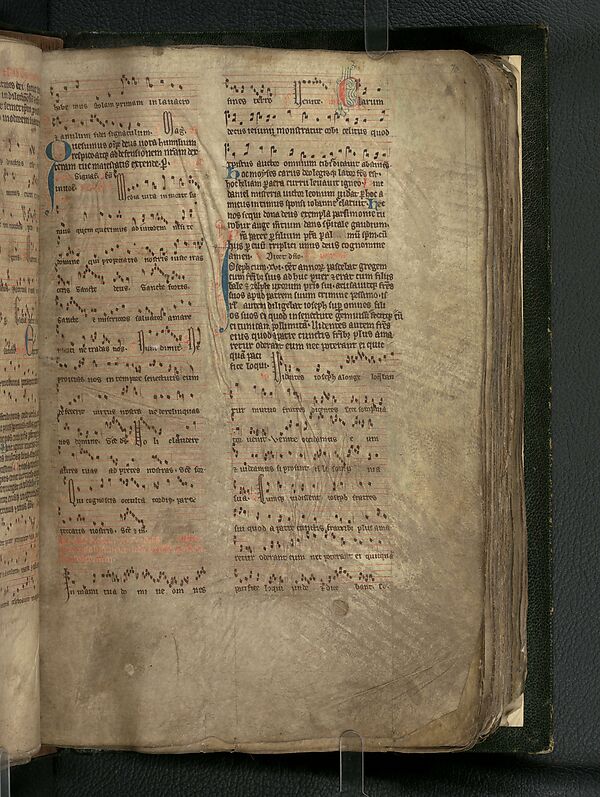Calendars.
Found in 28 Collections and/or Records:
3 letters to George Chalmers (from Joseph Ritson, Alexander Luders, and Christoph Friedrich Freudenreich) concerning the Bern manuscript of English and Scots laws, together with a calendar of the burgh laws and leges Scotie contained in it and a transcript of the memorandum on folio 61 verso.
'Bohun Psalter' made in England in the late 14th-century for Eleanor de Bohun, Duchess of Gloucester.
Calendar from a 14th-century Dominican liturgical book produced in southern Germany.
Calendar from a 14th-century liturgical work from Germany.
Calendar of Denmilne manuscripts in the Faculty of Advocates Library.
Calendar of Holyrood Abbey: a bifolium containing the entries for July to October.
The entries are written in red, blue, green, and black. There are several additions and deletions in later hands, and a sixteenth-century marginal note concerning writs of property.
Calendar written by Diarmuid Ó Fithcheallaigh; and a poem on the calendar usually attributed to Seán Ó Dubhagáin, followed by various medical texts, with some charms and folk cures.
Collection, made in the eighteenth century, of Jacobite songs, odes, satirical verse, etc.
Copy, 1685, of a calendar and `Stutt útskýring calendari`.
Copy of White Heather calendar, with historical notes and maps of Lachlan Dinwoodie.
Fragments of at least 7 and perhaps 8 manuscripts on medicine and astrology, some, if not all, English.
A and E may be in the same hand and from the same manuscript.
‘Gaelic Proverbs, Adages, Maxims & Common Sayings, with an English translation & explanatory notes. To which is added, A Specimen of a Gaelic Calendar', by James McIntyre, schoolmaster in Glasgow.
The author died in January 1835, when the work was about to be published. At the end are printed proofs of part of the preface and selections in manuscript from the proverbs given before. At the beginning is a note on McIntyre's life and work.

Late 13th-century manuscript known as the 'Sprouston Breviary'.
Manuscript known as the 'Herdmanstoun Antiphonal', or 'Herdmanstoun Breviary'.
Manuscript of a 'materia medica' in Gaelic, with some specifics and a calendar.
Manuscript of 'Oculus Sacerdotis' by William of Pagula.
Medical manuscript, in Gaelic, consisting chiefly of a treatise on diets and matters ancillary to medicine, including cosmology and a calendar.
Microfilm of Bohun Psalter. Hours and Psalter according to the use of Sarum, made in England for Eleanor de Bohun, Duchess of Gloucester.
Microfilm of calendar containing a large number of English saints.
Microfilm of Gaelic manuscripts.
Microfilm of late 13th century manuscript, known as the 'Sprouston Breviary
Microfilm of missal, psalters and calendar of Scottish religious houses.
Papers of the 'office' of Extinction Rebellion (XR) Edinburgh.
The papers were created for an exhibition by Extinction Rebellion (XR) at Summerhall during the 2019 Edinburgh Festival Fringe, and represent the group's activities and organised events during 2019 in the form of an ironic 'office'-style map, calendar, and Kanban board.
